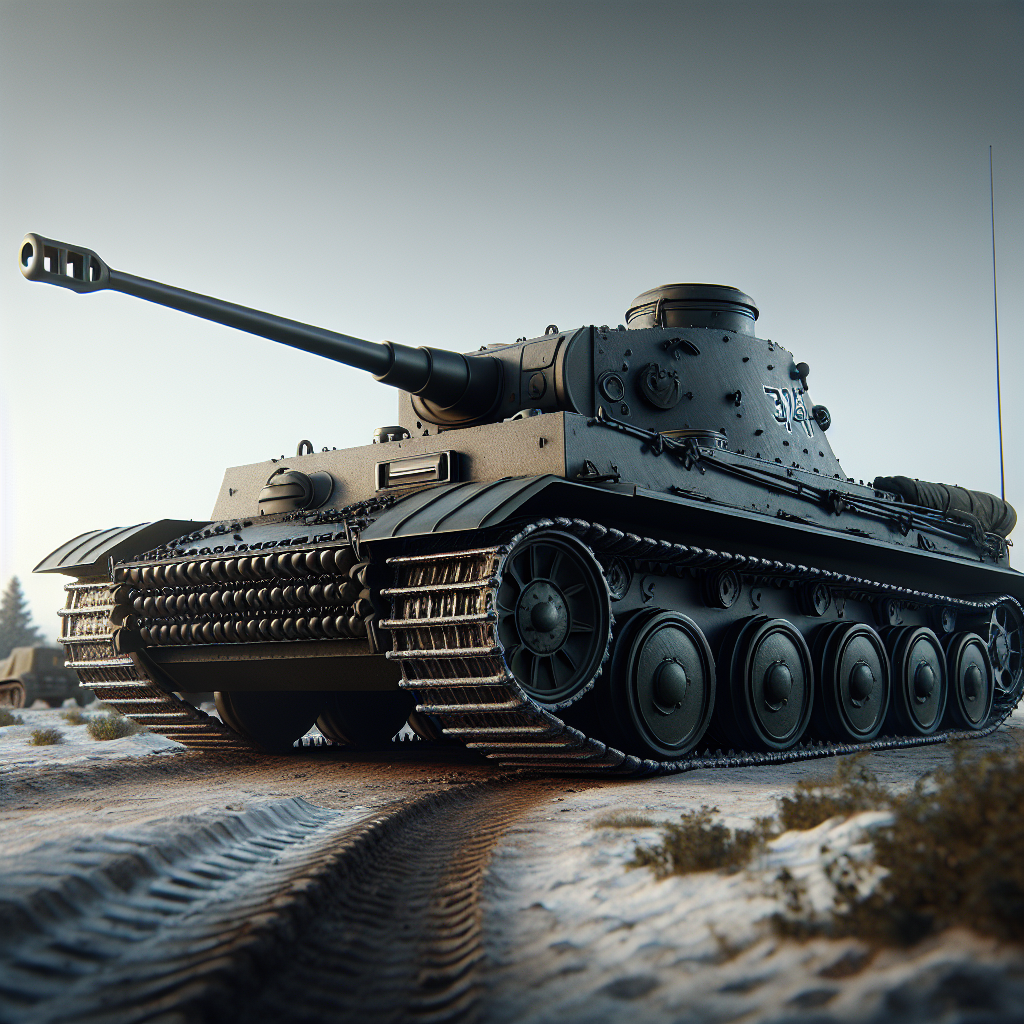The Jagdpanzer: A Symbol of Military Might and Innovation
The Jagdpanzer, a formidable tank destroyer, was a product of German engineering during World War II, designed to obliterate enemy armor with ruthless efficiency. Developed in the early 1940s, this beast of a machine was deployed on the Eastern and Western Fronts, where it wreaked havoc on Allied forces. The Jagdpanzer was a response to the need for a more mobile and heavily armored vehicle that could take on the increasing threat of Allied tanks. Its low profile and sloped armor made it a difficult target, while its powerful gun could penetrate the thickest of enemy armor.
German Engineering at Its Finest: The Jagdpanzer was a testament to German engineering prowess. It was built on the chassis of existing tanks, like the Panzer IV, but with a fixed superstructure that housed a powerful anti-tank gun. This design allowed for a lower silhouette, making it harder to spot and hit. The Germans knew how to make a machine that was both deadly and efficient.
A Tank Destroyer with a Purpose: Unlike traditional tanks, the Jagdpanzer was specifically designed to destroy enemy armor. It wasn't meant for infantry support or capturing territory. Its sole purpose was to hunt down and eliminate enemy tanks, and it did so with terrifying effectiveness. The Allies learned to fear the sight of a Jagdpanzer on the battlefield.
The Element of Surprise: The Jagdpanzer's low profile and camouflaged appearance allowed it to ambush enemy tanks with ease. It could hide behind terrain features and strike when the enemy least expected it. This element of surprise was a key factor in its success on the battlefield.
A Weapon of Desperation: As the war dragged on and Germany's situation became more desperate, the Jagdpanzer became a symbol of the Reich's determination to fight to the bitter end. It was a weapon born out of necessity, as Germany faced overwhelming odds on both fronts. The Jagdpanzer was a last-ditch effort to turn the tide of the war.
A Legacy of Fear: The Jagdpanzer left a lasting impression on those who faced it in battle. Its reputation as a tank killer was well-deserved, and it struck fear into the hearts of Allied tank crews. Even today, the Jagdpanzer is remembered as one of the most effective tank destroyers of the war.
The Cost of Innovation: While the Jagdpanzer was a marvel of engineering, it came at a high cost. The resources and manpower required to produce these machines were significant, and as the war progressed, Germany struggled to keep up with the demand. The Jagdpanzer was a reminder that even the most advanced technology has its limits.
A Symbol of German Tenacity: The Jagdpanzer was more than just a machine; it was a symbol of German tenacity and ingenuity. It represented the lengths to which the German military would go to defend their homeland and achieve victory. The Jagdpanzer was a testament to the fighting spirit of the German people.
A Challenge for the Allies: The presence of Jagdpanzers on the battlefield forced the Allies to adapt their tactics and develop new strategies. It was a constant challenge for Allied commanders, who had to find ways to neutralize this formidable threat. The Jagdpanzer pushed the Allies to innovate and improve their own armored forces.
A Machine of War: The Jagdpanzer was a machine of war, pure and simple. It was designed to kill, and it did so with brutal efficiency. It was a reminder of the destructive power of modern warfare and the lengths to which nations will go to achieve their goals.
A Controversial Legacy: The Jagdpanzer's legacy is a controversial one. While it was an impressive piece of engineering, it was also a tool of a regime that brought untold suffering to the world. The Jagdpanzer is a reminder of the dark side of human innovation and the consequences of unchecked ambition.
The Jagdpanzer remains a fascinating piece of military history, a symbol of both the heights of engineering and the depths of human conflict. It serves as a reminder of the power and peril of technological advancement in the pursuit of war.

